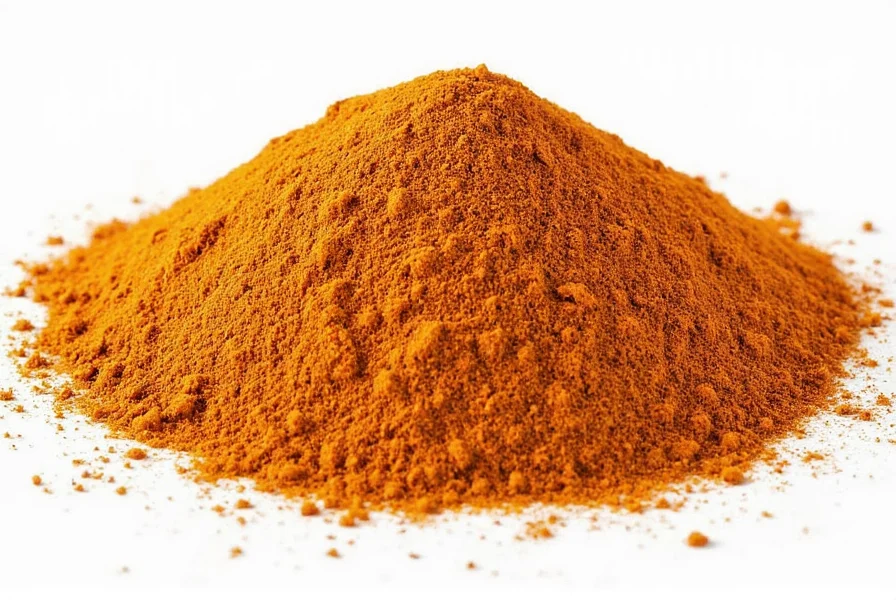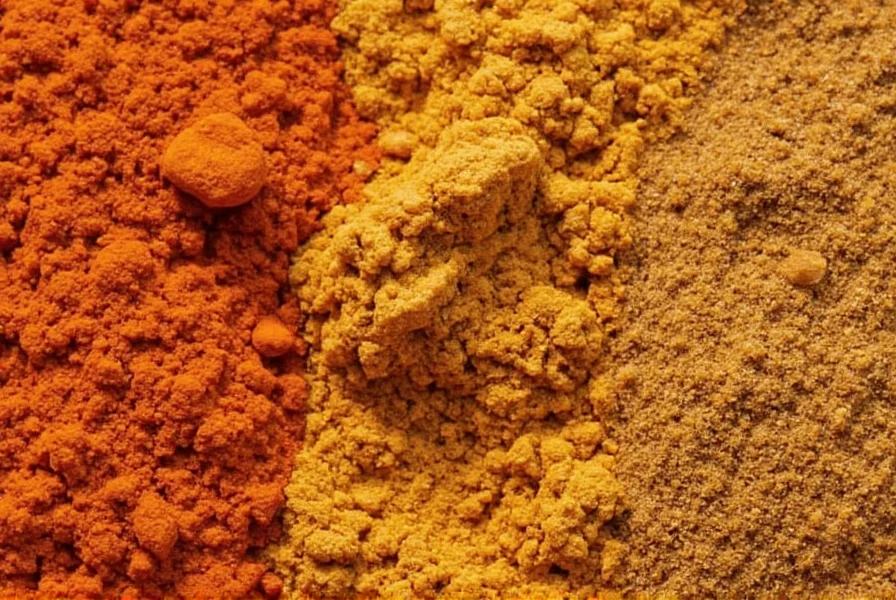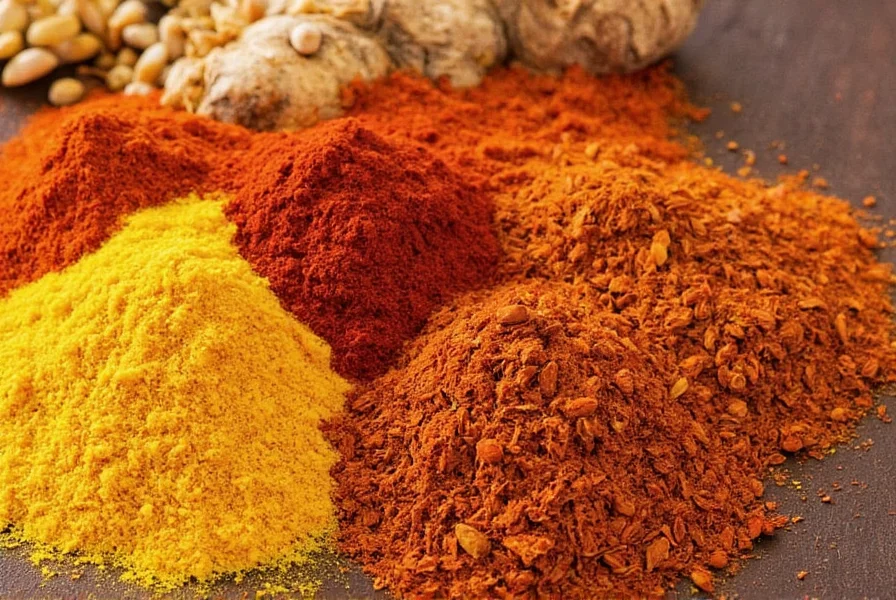Understanding what curry spice is made of reveals a world of culinary tradition and regional diversity. Despite the common perception of curry as a single spice, it's actually a carefully balanced blend that varies significantly across different cultures. The foundation of most curry powders centers around turmeric, which provides both the vibrant color and earthy base note that defines the blend.
The Essential Components of Curry Spice
At its core, curry spice combines several key ingredients that work in harmony to create its signature flavor profile. Turmeric serves as the backbone, contributing not only color but also a slightly bitter, earthy taste. Coriander seeds add citrusy notes, while cumin brings a warm, nutty dimension. Fenugreek lends a subtle maple-like sweetness, and chili peppers provide varying levels of heat depending on the blend's origin.
These fundamental elements form what many consider traditional curry powder made of the essential building blocks. The precise ratios differ dramatically between regions, creating distinct flavor profiles that match local culinary traditions. Understanding these common ingredients in curry spice blend helps home cooks select or create blends that match their desired flavor profile.

Regional Variations in Curry Blends
Curry spice isn't a one-size-fits-all seasoning. Different regions have developed their own distinctive blends:
| Region | Key Ingredients | Flavor Profile |
|---|---|---|
| Indian | Turmeric, coriander, cumin, fenugreek, chili, cardamom | Complex, earthy, moderately spicy |
| Thai | Lemongrass, galangal, kaffir lime, shrimp paste | Herbaceous, citrusy, aromatic |
| Japanese | Turmeric, coriander, cumin, poppy seeds, rye flour | Mild, slightly sweet, less spicy |
| Sri Lankan | Curry leaves, mustard seeds, cinnamon, cloves | Warm, floral, complexly spiced |
These regional differences explain why curry spice composition varies so dramatically around the world. What many Western consumers recognize as 'curry powder' typically reflects British interpretations of Indian spice blends, which themselves differ from region to region within India.
Curry Powder vs. Curry Paste: Understanding the Difference
Many people confuse curry powder with curry paste, but they're distinctly different products. Curry powder is a dry blend of ground spices, while curry paste contains fresh ingredients like lemongrass, galangal, and shrimp paste mixed with spices to form a wet concentrate.
When examining what is curry spice made of in commercial products, check the ingredient list carefully. Authentic blends contain only spices and sometimes salt, while lower-quality versions may include fillers, anti-caking agents, or artificial colors. The presence of ingredients like 'spice blend' or 'natural flavors' often indicates a less transparent formulation.
Creating Your Own Curry Blend
Making your own curry spice allows for customization and ensures freshness. A basic homemade curry powder recipe includes:
- 2 tablespoons turmeric
- 1 tablespoon ground coriander
- 1 tablespoon ground cumin
- 1 teaspoon fenugreek
- 1 teaspoon chili powder (adjust to taste)
- 1/2 teaspoon ground ginger
- 1/2 teaspoon black pepper
- 1/4 teaspoon cardamom
To enhance the flavor, toast whole spices before grinding them. This process, known as bhunao in Indian cooking, releases essential oils and creates a more complex flavor profile. Understanding how to identify authentic curry spice involves recognizing that quality blends use fresh, high-grade spices without unnecessary additives.

Storage and Usage Tips
Proper storage maintains the potency of your curry spice. Keep it in an airtight container away from light and heat. Whole spices stay fresh for up to a year, while pre-ground blends lose potency within 3-6 months. For the most vibrant flavor, consider grinding your own spices as needed.
When cooking with curry spice, blooming the spices in oil before adding liquids enhances their flavor. This technique, called tadka or tempering, allows the fat-soluble compounds in the spices to fully release. Understanding regional variations of curry spice blends helps you select the right blend for specific dishes—Indian curries typically use dry spice blends, while Thai curries rely on wet pastes.
Frequently Asked Questions
Is curry powder the same as garam masala?
No, curry powder and garam masala are distinct spice blends. Curry powder typically contains turmeric, giving it a yellow color, while garam masala is turmeric-free and features warming spices like cinnamon, cardamom, and cloves. Garam masala is usually added at the end of cooking, while curry powder forms the base of many dishes.
Does curry powder contain actual curry leaves?
Most commercial curry powders do not contain curry leaves. Despite the name, traditional curry powder blends rarely include curry leaves, which are more commonly used in South Indian cooking. Curry leaves have a distinct flavor different from the typical curry powder profile.
Why is turmeric the main ingredient in curry powder?
Turmeric provides curry powder with its characteristic yellow color and earthy base flavor. It also has natural preservative qualities and offers health benefits. While other spices contribute to the complex flavor profile, turmeric serves as the visual and foundational element that defines most curry blends.
Can I substitute curry powder in recipes?
Yes, but substitutions depend on the recipe. For Indian dishes, a mix of equal parts turmeric, coriander, and cumin can work. For Thai recipes, curry powder isn't an ideal substitute as Thai curries use wet pastes. Understanding what curry spice is made of helps create appropriate substitutions based on the specific flavor components needed.
Is curry powder spicy?
Not necessarily. The heat level in curry powder depends on the amount of chili peppers included. Many commercial blends, especially Western-style curry powders, are mild. Japanese curry powder is typically the mildest, while some Indian and Sri Lankan blends can be quite spicy. The term 'curry' refers to the blend itself, not its heat level.











 浙公网安备
33010002000092号
浙公网安备
33010002000092号 浙B2-20120091-4
浙B2-20120091-4